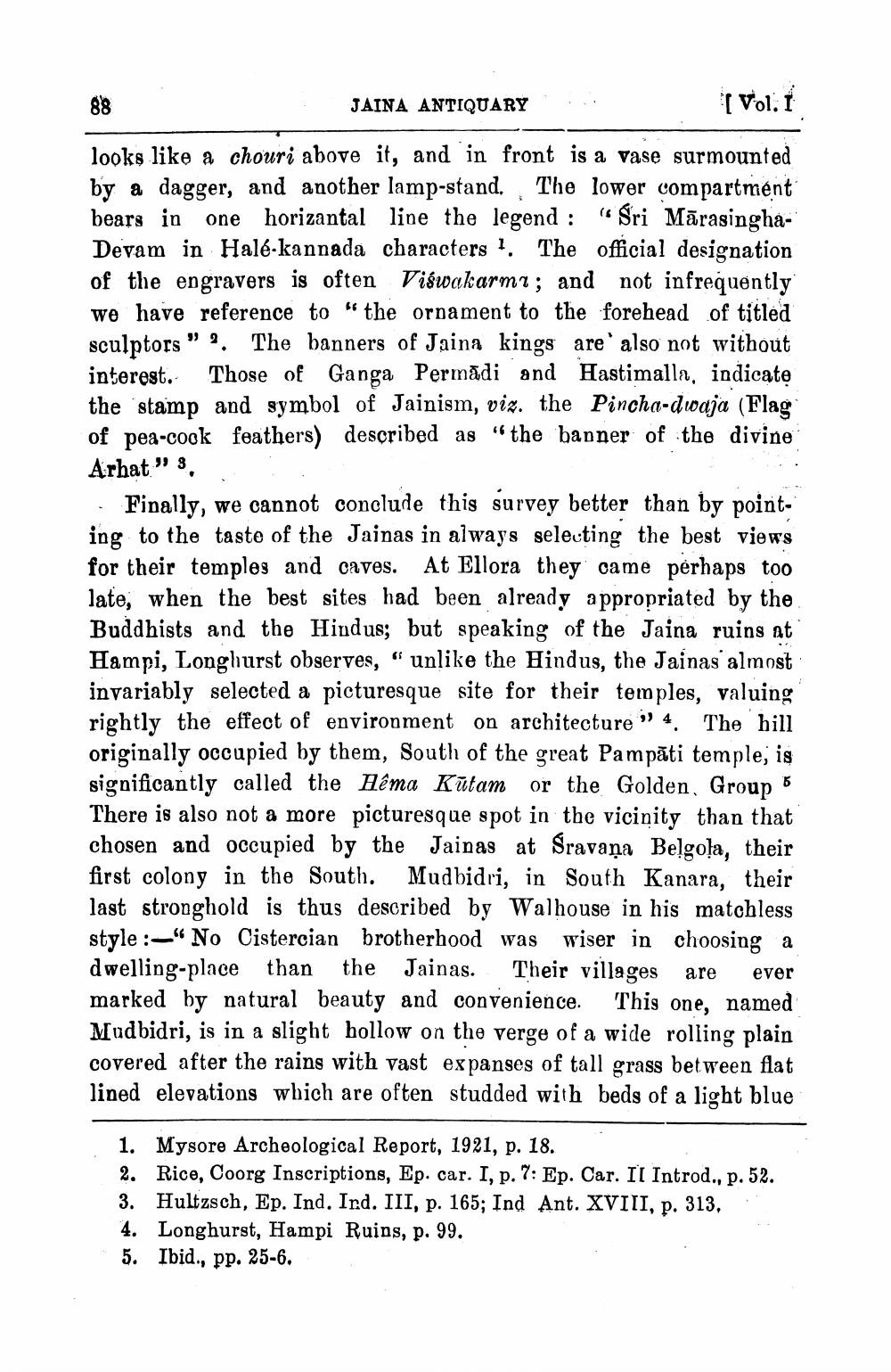________________
88
JAINA ANTIQUARY
[Vol. I
(6
looks like a chouri above it, and in front is a vase surmounted by a dagger, and another lamp-stand. The lower compartment bears in one horizantal line the legend: Sri MarasinghaDevam in Halé-kannada characters 1. The official designation of the engravers is often Viswakarma; and not infrequently we have reference to "the ornament to the forehead of titled sculptors" 2. The banners of Jaina kings are also not without interest. Those of Ganga Permadi and Hastimalla, indicate the stamp and symbol of Jainism, viz. the Pincha-dwaja (Flag of pea-cock feathers) described as "the banner of the divine Arhat" 3.
Finally, we cannot conclude this survey better than by pointing to the taste of the Jainas in always selecting the best views for their temples and caves. At Ellora they came perhaps too late, when the best sites had been already appropriated by the Buddhists and the Hindus; but speaking of the Jaina ruins at Hampi, Longhurst observes, "unlike the Hindus, the Jainas almost invariably selected a picturesque site for their temples, valuing rightly the effect of environment on architecture" 4. The hill originally occupied by them, South of the great Pampati temple, is significantly called the Hêma Kūtam or the Golden, Group 5 There is also not a more picturesque spot in the vicinity than that chosen and occupied by the Jainas at Sravana Belgola, their first colony in the South. Mudbidri, in South Kanara, their last stronghold is thus described by Walhouse in his matchless style:"No Cistercian brotherhood was wiser in choosing a dwelling-place than the Jainas. Their villages are marked by natural beauty and convenience. This one, named Mudbidri, is in a slight hollow on the verge of a wide rolling plain covered after the rains with vast expanses of tall grass between flat lined elevations which are often studded with beds of a light blue
ever
1. Mysore Archeological Report, 1921, p. 18.
2. Rice, Coorg Inscriptions, Ep. car. I, p. 7: Ep. Car. II Introd., p. 52.
3. Hultzsch, Ep. Ind. Ind. III, p. 165; Ind Ant. XVIII, p. 313,
4. Longhurst, Hampi Ruins, p. 99.
5. Ibid., pp. 25-6.




